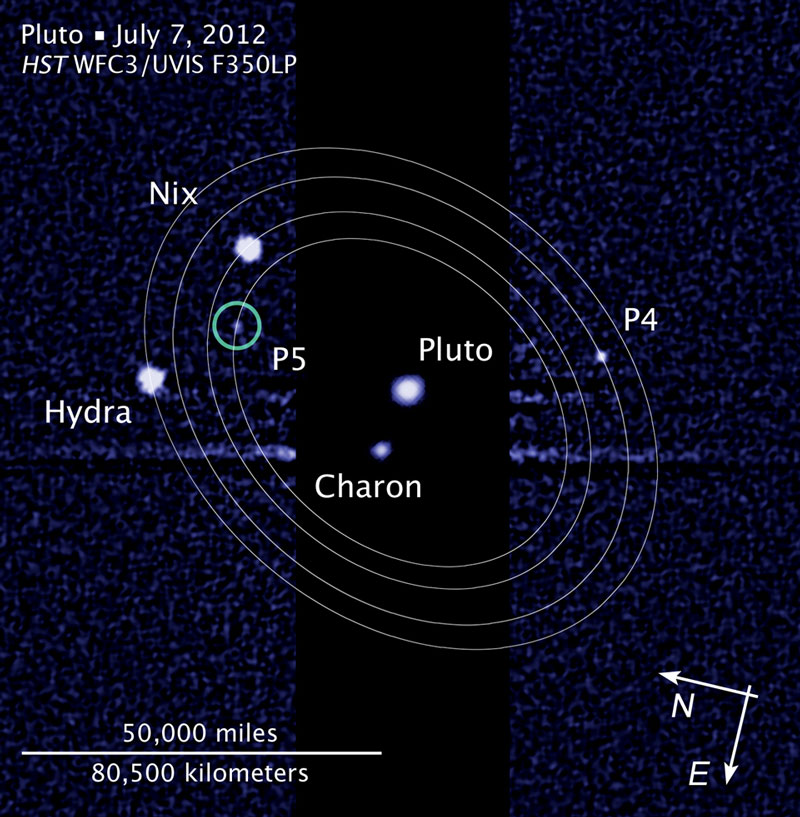Absolutely one of the coolest bits of optical wizardry that has come down the pipe for astronomy is the idea of adaptive optics (AO); by making some form of real-time measurement of how the atmosphere distorts the light from a point source you (well computers) can send commands to movable and deformable mirrors and actually correct for the atmosphere. This is a hugely great thing since the atmosphere (while nice for keeping us alive) is terrible for astronomy. The sensors, computers, and deformable optical elements of an AO system, while expensive, are vastly cheaper than the “easy” solution – putting your telescope in space. That’s one of the reasons why the Hubble Space Telescope (HST) takes such amazing images with a modest 2.4-meter primary mirror, outperforming much larger aperture ground-based telescopes. With AO systems the largest class of ground-based telescope can make observations that are much more “HST-like” in their angular resolution.
While I said these systems are vastly cheaper than going to space, they are still really pricey. Even simple bench-top set-ups are costly, particularly since I’m not looking to even put it on a telescope, but rather have something for my students to poke at. That’s when I got to thinking, and asked myself “is there a way to make a working model of this?” And I stumbled upon something.
The heart of a particular class of AO systems is the ability to make a measurement of the wavefront of light that is being observed. Without any sort of distortion this wavefront could be though of as “flat.” When the light has to go through some kind of inhomogeneous medium, like our atmosphere, it gets distorted, with “bumps” getting added it. A classic way of observing this wavefront distortion is through the use of a Shack-Hartmann Wavefront Sensor (SHWS). The crude explanation of how it work is this: The deformed light wavefront passes through a very fine grid of small lenses, or lenslets. Each of these lenslets focuses the light independently of the others (they are, after all, separate lenses). As long as these lenslets are small compared to the distortions they will make a sharp, in-focus, image. The image from each of the lenslets will however be at a slightly different position with respect to the lens’ center because they are each “seeing” a slightly different wavefront since they each sample a very small portion of the overall “bumpy” wavefront. If the distortions change with time (like the atmosphere) the images from each of the lenslets will drift around with respect to each other. Instruments employing this method not only are used in AO telescope systems, but also in checking the quality of optics, and even examining the human eye!
So what? These lenslet arrays are also really expensive, but what if I could be a cheap “macro-sized” version of it? For a demonstration wouldn’t a grid of 9-16 small lenses be able to show this? If I have an object to image far away, and let that light pass through such an array of lenses I should be able to produce 9-16 small images of the object. By sticking something that disturbs the light between the object and the lenses I should be able to make the images wander around with respect to each other, just as in a SHWS!
Well, I tried it out. I found and cleaned 9 small lenses in the physics lab, and brought them home to make a test run.

One of the lenses.
I then found a thick piece of styrofoam that I could make a crude lens holder out of. The first hole I drilled in ended up being too big, even though the 1.5” bit should have made a hole slightly smaller than the lens itself (~39mm) - too much styrofoam chipped out. I ended up drilling holes with a 1.25” bit that chipped out enough styrofoam in the end that the lenses could fit in snugly.
The Lens Holder Mark I is ready for action.
I stuck the lenses in, and holy moly, it worked! I could make a 3x3 array of small images of an object on the other side of the room, and by moving a large, glass, floating candle holder between the object and the lenses, see that the crude wavefront sampling I was trying to get was actually, to a degree, happening!
An LED Christmas tree as seen through the lens array (left) and projected onto the wall (right)
This is way cool – my proof of concept works. Now I need to make something a bit better to mount the array and I’ll be in business. In it’s final form for the lab-demo I’m thinking of mounting it parallel to the floor, with the source object high above it and the lenses creating their images on a screen on the floor. That way I can have an intermediate tray which I could put an irregular medium that the light would have to go through, a tray of water or other transparent fluid, or if it is sensitive enough we might only need a hairdryer or blow torch to stir up the air a bit.





























